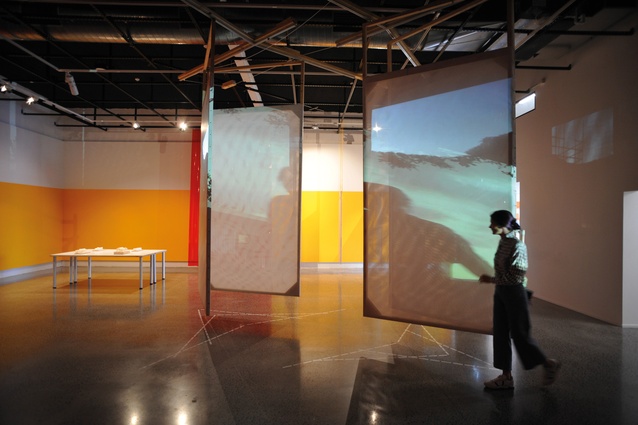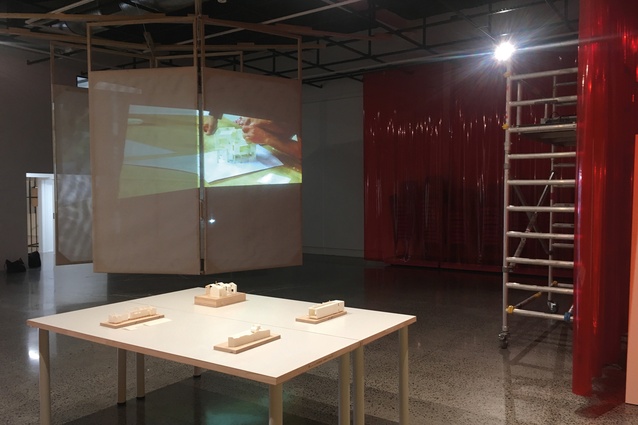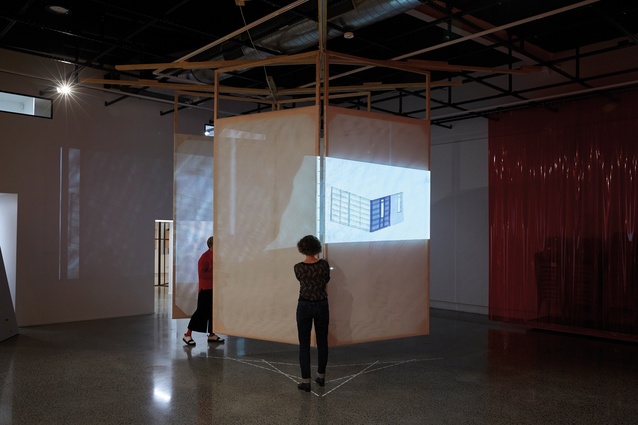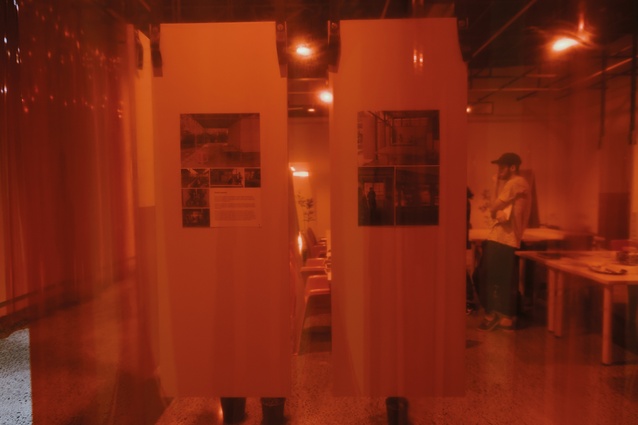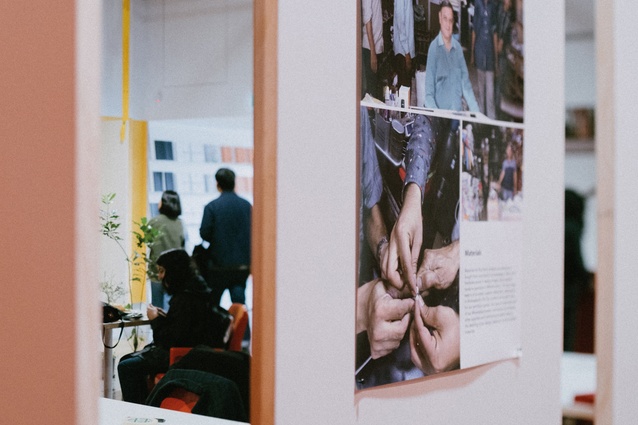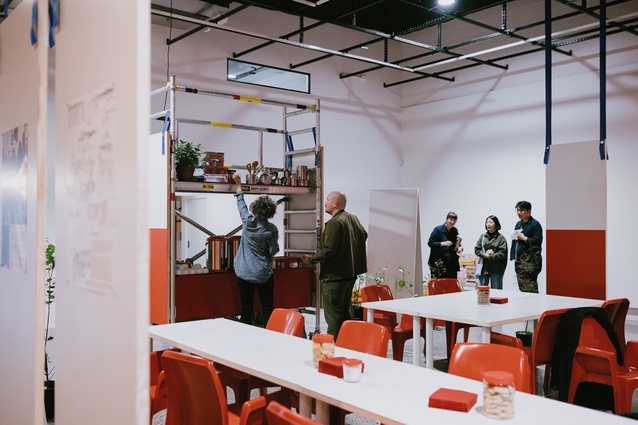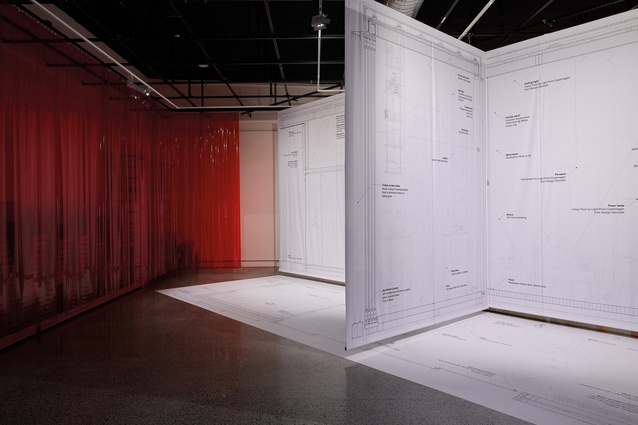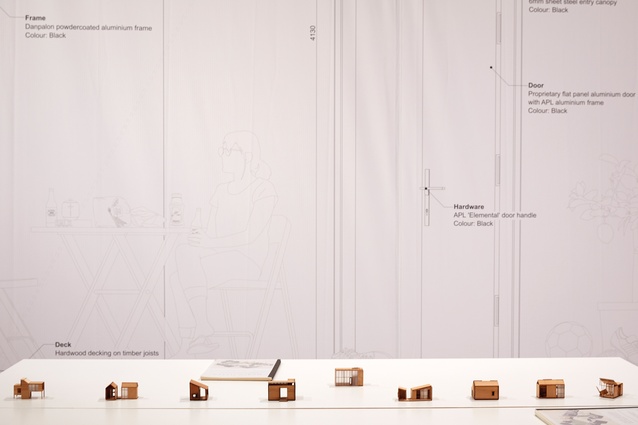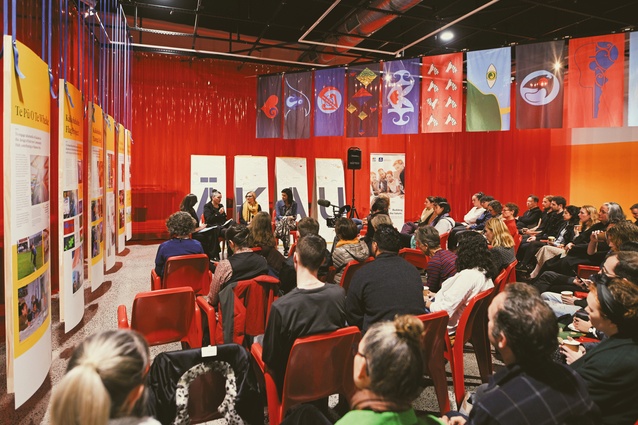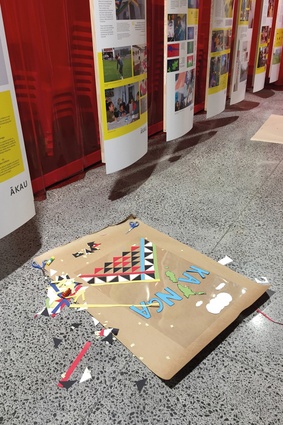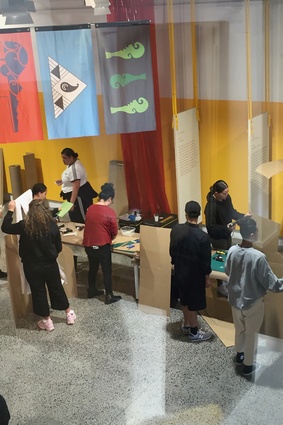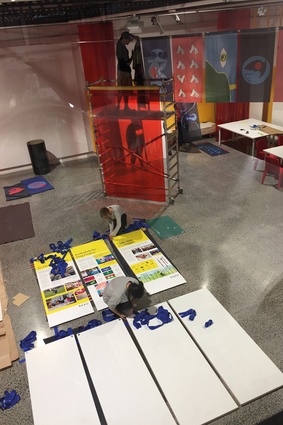Review: Making Ways
Sean Flanagan reviews Making Ways: Alternative Architectural Practice – an exhibition curated by Auckland School of Architecture and Planning Senior Lecturer Dr Kathy Waghorn, which ran at Objectspace gallery in Ponsonby.
The challenges of reviewing a rolling series of exhibitions, lectures and workshops no doubt suggest something of the efforts and complexities involved in curating and staging this four-week exploration of different ways to practise architecture in Aotearoa. Built around the stories of four firms – Makers of Architecture, Hatch Workshop, Unit Y and ĀKAU – Making Ways sought to generate discussion about ‘alternative’ architectural practices. In so doing, it offered a forum which was different from more traditional architecture shows.
This was performance art – a largely theatrical display – with a gallery sparsely dressed by each exhibitor, but a space nonetheless activated by a host of events, drawing good crowds to discuss a core idea: how it’s possible to make architecture today.
I experienced the exhibition’s highs – some engaging, early-morning conversations that lent life and vibrancy to the displays that surrounded, cut through, and hovered over the space. The sometimes-fetishised display of things one might expect in a gallery had, in this instance, to make way for discourse.
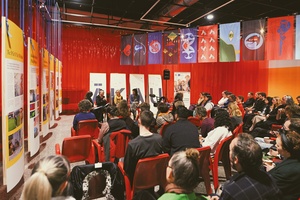
Literally, the things on show often had to move out of the way of members of the gallery staff who were constantly setting up and packing down chairs, erecting and moving tables, shifting a mobile scaffold that variously supported AV/IT and served as a kitchen bench for a coffee urn and biscuits, welcoming guests, organising school groups, liaising with educators, laying out tea and replenishing the pastries. Things made way for ideas and ideals: a remarkably apt exhibition strategy aligning with the curatorial focus on a group of architects who do indeed make stuff but who are generating renown – at this stage at least – for their making ways.
Mid-week afternoons presented a chance to see the exhibition’s other side – as a quiet space anticipating the next gathering. On one occasion when I visited, staff members were making use of the central forum, their vinyl transfers laid out on tables, cutting away as they prepared to install a new work in the adjacent room.
Mistakenly, I wondered if this was an exhibitor at play, having transformed the gallery into a studio. But I twigged to what was happening before embarrassing myself. Still, it left an impression of how much the work on show was eclipsed by ways of working. The Making Ways exhibitors collectively and repeatedly stepped back to offer a setting for things to happen alongside and outside of their work. There was a generosity here. No one overwhelmed the space with exhibits or ideas.
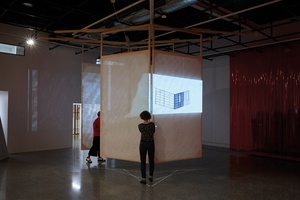
In part, this is likely to be a result of the fact they all have other jobs aside from putting exhibitions together – as academics, architects, or emboldened social entrepreneurs. They’re not artists – and I say that in a good way – thankfully; they were too busy making other important things happen to be too obsessed with how they looked or too concerned with shaping an overwhelming on-brand message. And, strangely, for architects, there wasn’t a lot of overt salesmanship. No one seemed to be pitching for their next job.
Wellington-based practice Makers of Architecture reconfigured the gallery with hanging operable screens lined in a diaphanous industrial gauze. On one, the studio projected a film showing the ways in which it draws design and construction together through technology. From BIM model, to robotic fabrication, to the delivery and erection of cassettes on site, we saw buildings made in a presumably efficient, sustainable, and economic manner. One of the film’s curiosities – a figure regularly popping in to check on the robot’s progress from behind the safety of a wire cage – spoke of the furtive, anxious nature of this burgeoning way of working.
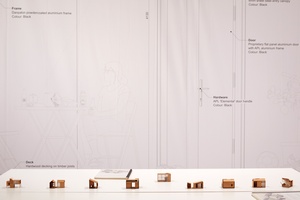
Hatch Workshop, millennial nomads roaming between New Zealand, India and, soon, they’re hoping, East Timor, furnished the gallery as a workers’ canteen, serving hot drinks and biscuits in a nod to one of its projects in India. The architects wanted to show the way they foreground social concerns and social activities. Around the canteen hung panels of text and drawings explaining their projects – notably, relocatable accommodation for farmhands. The practice writes that its goal is to bring dignity to the conditions of overlooked citizens.
Unit Y comprises a number of Auckland-based architects and graduates but the group had its genesis in the university world. The team chose to partition the gallery space with 1:1 detailed plans and sections documenting a small house designed by a final-year student. The large display of a small dwelling, depicted with sizeable details documenting things of substance – timber frames, aluminium joinery, door handles – but doing so in a paper-thin way, critiqued the idea of ‘bigger is better’ and its influence on property values. The constant scale shift evoked by this small project writ large raised questions of the housing crisis and the relationship between teachers and students seeking answers.
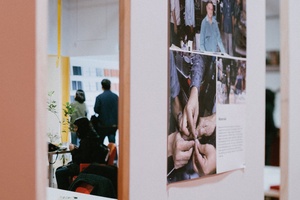
ĀKAU, whose directors split themselves between Kaikohe in the Far North and Titirangi in the far West, brought its version of taitamariki engagement to town along with a travelling roadshow of youth educators and consultation facilitators. Its Saturday-morning workshop opened with Mums and Dads joining the young ones for a round of team-based paper-scissors-rock before settling in to experience how ĀKAU draws a community into questions of people and place, along with their values and their artistic representation. Everyone walked away after a morning of looking inwards and outwards and having made a collage to capture it all. Our pictures were photographed and kept for posterity. As ĀKAU said at its mid-week interview, it’s important that processes like this lead to something being made. Too often, they said, Māori have been involved in consultation from which nothing has materially changed.
The range of work on show highlighted the intriguing ways of working in which practitioners can engage today. But, exactly what the exhibits were alternatives to remained something of a question. Makers of Architecture, Hatch Workshop, Unit Y and ĀKAU were as much alternatives to one another as they were to any more-traditional idea of the profession. Though maybe that was not the target.
In many respects, the exhibition reinforced the ways in which every practice is an alternative: something akin to Frank Lloyd Wright’s observation that there are as many architectures as there are architects. But what each of these practices did bring was a confidence in and commitment to its own particular alternative. And that’s to be both celebrated and looked upon warily. For an intensity of focus and outright commitment to a project can itself blinker one to making way for alternatives.
This article first appeared in Architecture New Zealand magazine.


